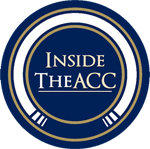Editor’s Note: the original version of the article used 247’s “composite” rankings. It has been updated/corrected with 247’s own team rankings.
Now that Signing Day is over, here’s a look at how the major recruiting services ranked the recruiting classes in the ACC. First, we’ll take a look at in-conference rankings, then we’ll present how ACC teams are ranked nationally. Lastly, we’ll discuss how the services rank recruiting classes, to shed a little light (very little, haha) on the data.
Note that Maryland is not included in these rankings, and Louisville is. The Terps are leaving the conference at the end of this academic year, and Louisville is coming in next year.
[table id=128 /]
A few brief notes:
- FSU and Miami are unanimous #1 and #2 in the ACC.
- Only three teams are ranked in the top 20 nationally by the services, with two more, UNC and VT, edging into the top 30. Half of the conference’s teams are composite-ranked outside the top 40.
- NC State and Virginia fared much better in recruiting (ranked #6 and #7 in the ACC) than they did on the field last year, where each finished dead last in their division and they combined to go 0-16 in conference play.
How the services rank recruits
How the recruiting services rank classes varies, and that’s why a composite is valuable. For information on how each service does their rankings, click the links below.
Rivals.com: Rivals assigns points for a player’s “Rivals Rating” and their ranking in the Rivals Top 250 (if applicable) … but only for the top 20 rated recruits in a team’s class. So a team is hurt by not signing 20 players, but they’re not necessarily helped by going beyond 20.
247 Sports: 247 uses a Gaussian distribution formula that assigns diminishing value to players as you move down the list of commitments for a team. In other words, just like Rivals, 247 doesn’t reward teams for signing huge classes, although their means of calculating rankings is more sophisticated mathematically — they don’t suddenly cut a ranking off at 20 players like Rivals does.
Scout.com: Scout uses a formula similar to Rivals, and similar to Rivals, Scout cuts off the calculation after the highest-ranked 25 players in a class. So oversigning is not rewarded. But it’s my personal opinion that Scout’s rankings are inconsistent and not thorough. If you look at their list of analysts, you see that the “East” region is covered by two analysts: a Northeast analyst, and an analyst in the state of North Carolina … which is part of the “South” region. No one on Scout’s team is a dedicated analyst for the state of Virginia. Note that NC State is rated much higher by Scout than other services, while Virginia is rated much lower. Coincidence, or a result of the makeup of their team of analysts?
ESPN: ESPN’s system is numbers based to a degree, but they also openly admit that they add in a human factor that is outside the numbers (meh), plus they examine rosters to see if a recruiting class fills a team’s needs (good). If you believe in conspiracy theories, this means that ESPN’s analysts are free to pump up the ratings of their hot SEC properties. (I’ll admit I haven’t analyzed this, I’m just cracking a joke … I think.) Plus I think they put too much emphasis on their ESPN 300, which can lead to a higher ranking than other services for a class like Virginia’s, which is top-heavy with ESPN 300 players but is otherwise shallow and small. Note how Virginia is ranked #4 in the ACC by ESPN, yet no higher than #6 by anyone else.



